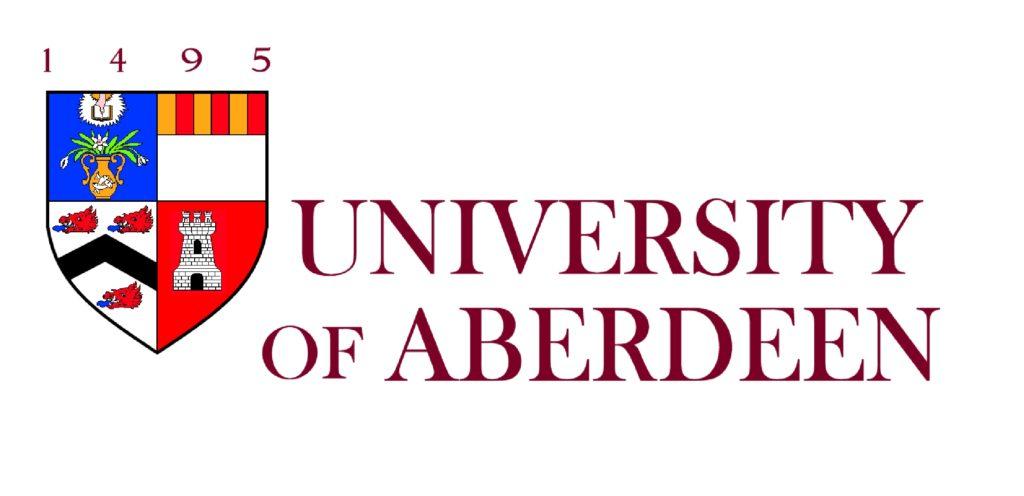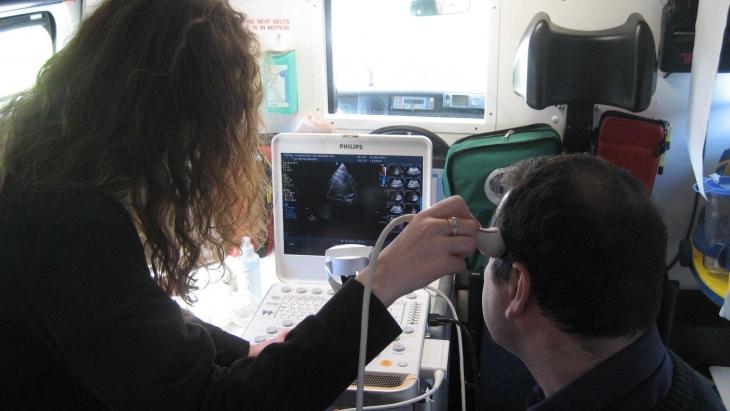Saving Soldiers in the Field: UK Researchers Create Portable Ultrasound That Makes 3D Models of Brain Scans
 The benefits of 3D printing are so wide-reaching today that it’s become a technology that can mean something very different from one person to the next. Whether you are a heart surgeon, aeronautics engineer, artist, librarian, student, or—well, how much time do you have? This is a list that could reach into infinity, a word often used in connection with 3D printing, as it offers an endless amount of options for design and invention. Much obvious focus is placed on this technology because it allows for unprecedented opportunity for customization in product development and manufacturing, usually coupled with greater—and often stunning—affordability.
The benefits of 3D printing are so wide-reaching today that it’s become a technology that can mean something very different from one person to the next. Whether you are a heart surgeon, aeronautics engineer, artist, librarian, student, or—well, how much time do you have? This is a list that could reach into infinity, a word often used in connection with 3D printing, as it offers an endless amount of options for design and invention. Much obvious focus is placed on this technology because it allows for unprecedented opportunity for customization in product development and manufacturing, usually coupled with greater—and often stunning—affordability.
And even though it may be unconscious, what drives many of us to enjoy 3D printing most is the self-sustainability factor. We can do things on our own, with no appointment needed. For the jewelry maker printing from home, the bioprinting researcher working on a mindblowing concept in the lab, or a doctor making prosthetics for kids in a developing country, the level of independence that can be experienced today, along with creativity, is what makes such an exciting difference. From allowing for a future in space to propelling the small business ahead, self-sustainability may be one of the most incredible—and overlooked—benefits of 3D printing by many. Not by the military, however. And they’ve had a bead on this technology far longer than most of us even knew it existed.
 Now, researchers at the University of Aberdeen are credited with making brain scanning software that may function as a very important portable diagnostic tool in the future for military use, offering for further sustainability in the field. In a collaboration with the Ministry of Defence’s Science and Technology Laboratory (DSTL), the team is working on a small device that would allow medical professionals to actually create a 3D model of a brain with a potential injury, and to do so out of the hospital or office environment, as in during combat or while at a remote installation.
Now, researchers at the University of Aberdeen are credited with making brain scanning software that may function as a very important portable diagnostic tool in the future for military use, offering for further sustainability in the field. In a collaboration with the Ministry of Defence’s Science and Technology Laboratory (DSTL), the team is working on a small device that would allow medical professionals to actually create a 3D model of a brain with a potential injury, and to do so out of the hospital or office environment, as in during combat or while at a remote installation.
While the researchers obviously recognize a serious need for this technology, undoubtedly they will have plenty of company aside from the military should this product become available to the public en masse.
“Traumatic brain injury is a big problem for the military, especially because it can be difficult to spot in the field and if left untreated, it can have long-term effects,” said Dr. Leila Eadie, a researcher at the Centre for Rural Health at the University of Aberdeen. “Ultrasound is not normally used for imaging the brain, but we hope to prove through further investigations that it is a viable method of making an early diagnosis of head injury whilst in the field.”
The 3D modeling system could function as a crucial diagnostic tool in numerous scenarios because head injuries can easily go undetected, with a minor bump or a trauma often being hard to discern at first. If you’ve ever had a concussion, you probably understand exactly how that works as at first there might be question as to whether or not anything is even wrong; however, the injuries that cause bleeding in the brain are very dangerous and quick attention is optimal—especially for a soldier, where a head injury could be easily overlooked, causing dire consequences later.
“UK Armed Forces operate in many remote locations and where personnel are injured we need to ensure that all conditions can be rapidly and correctly diagnosed to provide the best possible treatment and care. Devices which are lightweight, easy to deploy and easy to use, such as the portable ultrasound scanning support system being developed by the University of Aberdeen, have the potential to enhance our capabilities on operations and enhance patient care,” said DSTL capability adviser Neal Smith.
 As with other helpful diagnostic devices emanating from the 3D front, the equipment overall is light in weight and easy to use. While we don’t yet have any information on the cost, most likely the portable medical tools are affordable to make as well. This all bodes well for future potential in the field, as well as offering positive impact nearly anywhere for patients in need.
As with other helpful diagnostic devices emanating from the 3D front, the equipment overall is light in weight and easy to use. While we don’t yet have any information on the cost, most likely the portable medical tools are affordable to make as well. This all bodes well for future potential in the field, as well as offering positive impact nearly anywhere for patients in need.
There are many other areas of the military where the innovation factor reigns along with the self-sustainability factor, from sailors out at sea coming up with helpful new designs to the Army using 3D printing to customize meals. Allowing for the ability to function in remote areas, 3D printing offers a huge new service to the military not only for making parts and components, but also items that can make life a lot easier for military personnel, as well as possibly keeping them alive on the front lines. Discuss this new invention over in the Portable Brain Scans & 3D Models for Soldiers forum at 3DPB.com.
[Source/Image: Aberdeen University]Subscribe to Our Email Newsletter
Stay up-to-date on all the latest news from the 3D printing industry and receive information and offers from third party vendors.
Print Services
Upload your 3D Models and get them printed quickly and efficiently.
You May Also Like
3D Printing News Briefs, June 11, 2025: Sustainability, Automotive Tooling, & More
We’re starting with sustainability news in today’s 3D Printing News Briefs, as EOS has strengthened its commitment on climate responsibility, and Zestep is making 3D printing filament out of eyewear...
3D Printing 50 Polymer Stand-In Parts for Tokamaks at the PPPL & Elytt Energy
Of all the world’s things, a tokamak is one of the hardest, most complex, expensive and exacting ones to make. These fusion energy devices make plasma, and use magnets to...
3D Printing News Briefs, May 17, 2025: Color-Changing Materials, Humanoid Robot, & More
We’re covering research innovations in today’s 3D Printing News Briefs! First, Penn Engineering developed 3D printed materials that change color under stress, and UC Berkeley researchers created an open source,...
Firehawk Aerospace Partners with JuggerBot 3D, Gets $1.25M from AFWERX for 3D Printed Propellants
Texas-based Firehawk Aerospace, an advanced energetic materials firm that works with aerospace and defense applications, announced a strategic partnership with JuggerBot 3D, an Ohio-based large-format 3D printer manufacturer. Together, the...

































